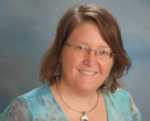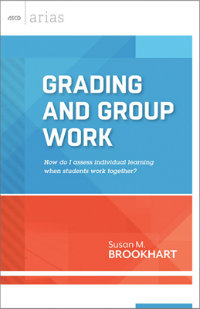Grading Group Work Fairly & Effectively
Grading and Group Work: How Do I Assess Individual Learning When Students Work Together?
By Susan M Brookhart
(ASCD, 2013 – Learn more)
Reviewed by Tracey Muise
Grading and Group Work is a quick read that deals with an issue I’ve been struggling with: How do I fairly assess group work? Surely not all members of a group have the same understanding of the material, so how do I reflect that? Early in the book Brookhart confirms my suspicion that it is not fair to assign a group grade—a trap I have fallen into.
This book is best understood as a follow up to Brookhart’s How to Create and Use Rubrics: for Formative Assessment and Grading (reviewed here), although reading it is certainly not necessary. In her rubric book, Brookhart thoroughly explains her philosophies about appropriate use of rubrics and grading. She discusses a few of these points in Grading and Group Work as well, just in less detail. This less-than-50-page book in ASCD’s Arias series is packed with ideas and examples for grading group projects in various subjects.
Brookhart emphasizes the importance of differentiating between assessing process skills and learning outcomes (one of the ideas addressed in further detail in her rubric book). She provides several methods for formative and summative assessments. Her ideas include personal reflection, rubrics, oral questioning, and post-project testing. Brookhart explains each method fully with an extensive example for each.
Assessing through multi-step projects
Brookhart encourages the use of “multistep design” projects. As the name implies, these projects involve multiple opportunities for assessment, both formative and summative. And with various checkpoints along the way, students can be redirected or refocused. Multistep design projects are typically complex and involve higher-order thinking. In fact, Brookhart warns against assigning ‘fact reporting’ group work as she feels they don’t ask students to really show what they know.
I particularly liked her idea of “write your own question” for a culminating assignment, because it asks the student to reflect on and explain their learning. Students are asked to identify a question that the project helped them understand or made them curious about. Then, of course, the student goes on to explain their choice. Grading and Group Work answered my questions about assessing student work and gave me good ideas for crafting better projects.
Tracey Muise, currently at St. George’s Episcopal School in Milner, GA, has been engaging and challenging middle school students for over fifteen years in a science classroom. Previously she taught at the Episcopal School of Knoxville (TN), Girls Preparatory School (Chattanooga, TN) and the Edmund Burke School (Washington, DC). She earned her M.S. in environmental education in 1996 from Antioch New England Graduate School and her undergraduate degree in biology in 1990 from Drew University.




































